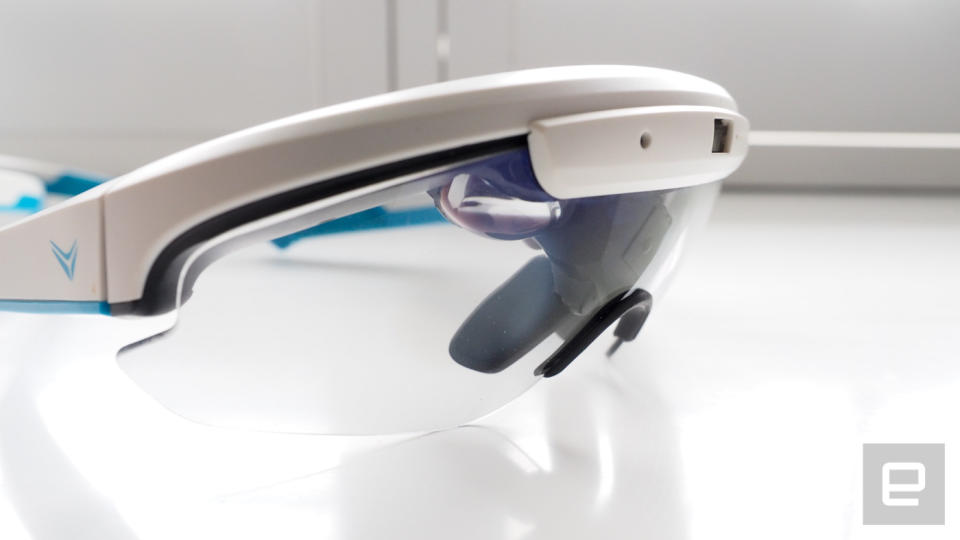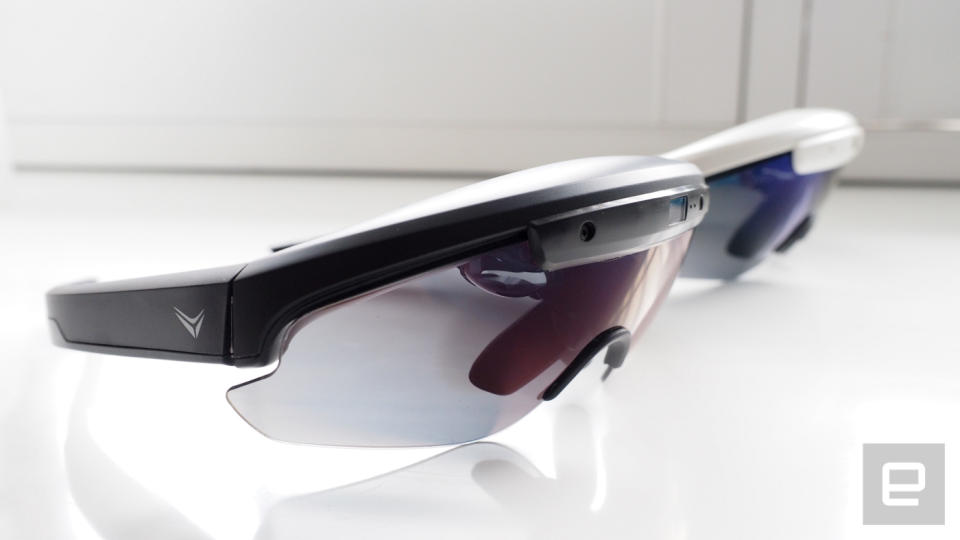AR glasses will quench your ride-stat thirst
Unlike my pitiful stats, the Raptor specs were outstanding.
The bike I was riding to test a new set of AR glasses was probably a bit too small for me. Also, it was a typical San Francisco summer day, so it was cold and windy, and, like an idiot, I left my jacket upstairs. But none of that mattered, because I was peering into the future of biking. The best part was that the Everysight Raptor AR glasses I was wearing didn't feel bulky and didn't require me to strain my eye socket to look into a tiny screen -- all the information was being projected right in front of me.
The promise of an AR future has stalled a bit. Google Glass appeared with much fanfare, then slowly disappeared from the limelight. But not before so-called glassholes grabbed headlines for being mugged and banned from bars because no one likes the idea of being secretly recorded.
Epson's Moverio specs continue to be outstanding for industrial uses but not much else, and most everything else feels a bit like a gimmick targeting early adopters. But the Everysight Raptor is ready for folks beyond the super nerds. In my short time with it, I realized that if I rode a bike more than eight times a month, I'd want these.
Essentially, the Raptor AR glasses are a smartphone (minus the calling) shoved into a pair of specs with a quad-core CPU, 2GB RAM, 16 to 32 GB of storage, GPS, accelerometer, gyroscope, magnetometer, barometer, Bluetooth, WiFi, speaker and a mic for voice commands.

The glasses project information directly onto the lens of your right eye. You're not looking at a tiny screen. It's right there in front of you, floating off in the distance. The Raptor I was using was set to show current speed, mapping, and -- via a wearable -- my heart rate. The information was crisp and easy to read and was set to appear as if about 20 feet in front of me. After a few blocks, I got used to switching focus from the display to the road. Fortunately, the display can be switched off via a button on the left-hand side of the specs in case you really need to pay attention to the road ahead.
The rest of the controls are available on the right-hand side of the frames. A series of swipes and taps brings up other settings, like access to media, camera and brightness controls. A handlebar-mounted controller is also available, and the whole system can be managed by a companion Android and iOS app.
During my short ride around Fisherman's Wharf, it never felt like the OLED projection on the display was too dim. It was overcast, though, so the light was diffused. I was assured that the Raptor worked just as well on sunny days.
The Raptor also ships with a camera, so I was able to capture photos and video via the HD sensor placed between the rider's eyes. It won't replace your DSLR or even your new smartphone camera, but it's good enough for a few snapshots of what you're looking at while riding without having to pull over and dig your phone out of your pocket.
Destination riding was simple enough, and the routing was easy to understand and follow. Although, when we veered off-track, instead of rerouting, it just pointed me back to my original route. If you have a set path for your ride, I'm sure that's helpful, but if you're a bit lost, it would be nice to see exactly how to get to your destination from your current location.
Fortunately, the company is launching an SDK for the Android-powered glasses. So if another developer wants to take on that rerouting issue, they can with their own app.
While what Everysight has accomplished is impressive, it's not too far from what its parent company, Elbit, has done for decades. It provides heads-up displays for military and commercial flight and combat applications. But getting the Raptor down to its current iteration still took a few years (15, to be exact) and about five generations of the glasses.

The result is an AR experience that makes sense and doesn't feel gimmicky. Everysight says the glasses will have an eight-hour battery life, which is good for those long weekend rides, and the Raptors have an insert for prescription lenses too. The company says the Raptor will be ready for shipping by the end of the year, but there's no word on pricing yet. So if you're a hardcore cyclist looking for some new specs that also share real-time information about your ride, you might want to start saving up your nickels, dimes and probably hundred-dollar bills.































